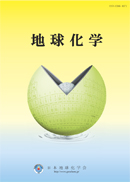Volume 32, Issue 4
Special Issue: “Material Science of Cosmic Dust”
Displaying 1-13 of 13 articles from this issue
- |<
- <
- 1
- >
- >|
Special Issue: “Material Science of Cosmic Dust”
-
1998 Volume 32 Issue 4 Pages i-
Published: December 15, 1998
Released on J-STAGE: December 26, 2016
Download PDF (178K)
Review on “Material Science of Cosmic Dust”
-
1998 Volume 32 Issue 4 Pages 149-159
Published: December 15, 1998
Released on J-STAGE: December 26, 2016
Download PDF (1429K) -
1998 Volume 32 Issue 4 Pages 161-174
Published: December 15, 1998
Released on J-STAGE: December 26, 2016
Download PDF (1737K) -
1998 Volume 32 Issue 4 Pages 175-184
Published: December 15, 1998
Released on J-STAGE: December 26, 2016
Download PDF (1631K) -
1998 Volume 32 Issue 4 Pages 185-191
Published: December 15, 1998
Released on J-STAGE: December 26, 2016
Download PDF (773K) -
1998 Volume 32 Issue 4 Pages 193-201
Published: December 15, 1998
Released on J-STAGE: December 26, 2016
Download PDF (848K) -
1998 Volume 32 Issue 4 Pages 203-213
Published: December 15, 1998
Released on J-STAGE: December 26, 2016
Download PDF (1009K) -
1998 Volume 32 Issue 4 Pages 215-223
Published: December 15, 1998
Released on J-STAGE: December 26, 2016
Download PDF (1415K)
Original Paper on “Material Science of Cosmic Dust”
-
1998 Volume 32 Issue 4 Pages 225-232
Published: December 15, 1998
Released on J-STAGE: December 26, 2016
Download PDF (808K) -
1998 Volume 32 Issue 4 Pages 233-241
Published: December 15, 1998
Released on J-STAGE: December 26, 2016
Download PDF (958K)
Abstract of doctoral thesis
-
1998 Volume 32 Issue 4 Pages 242-
Published: December 15, 1998
Released on J-STAGE: December 26, 2016
Download PDF (178K) -
1998 Volume 32 Issue 4 Pages 243-
Published: December 15, 1998
Released on J-STAGE: December 26, 2016
Download PDF (172K)
-
1998 Volume 32 Issue 4 Pages 244-
Published: December 15, 1998
Released on J-STAGE: December 26, 2016
Download PDF (171K)
- |<
- <
- 1
- >
- >|
